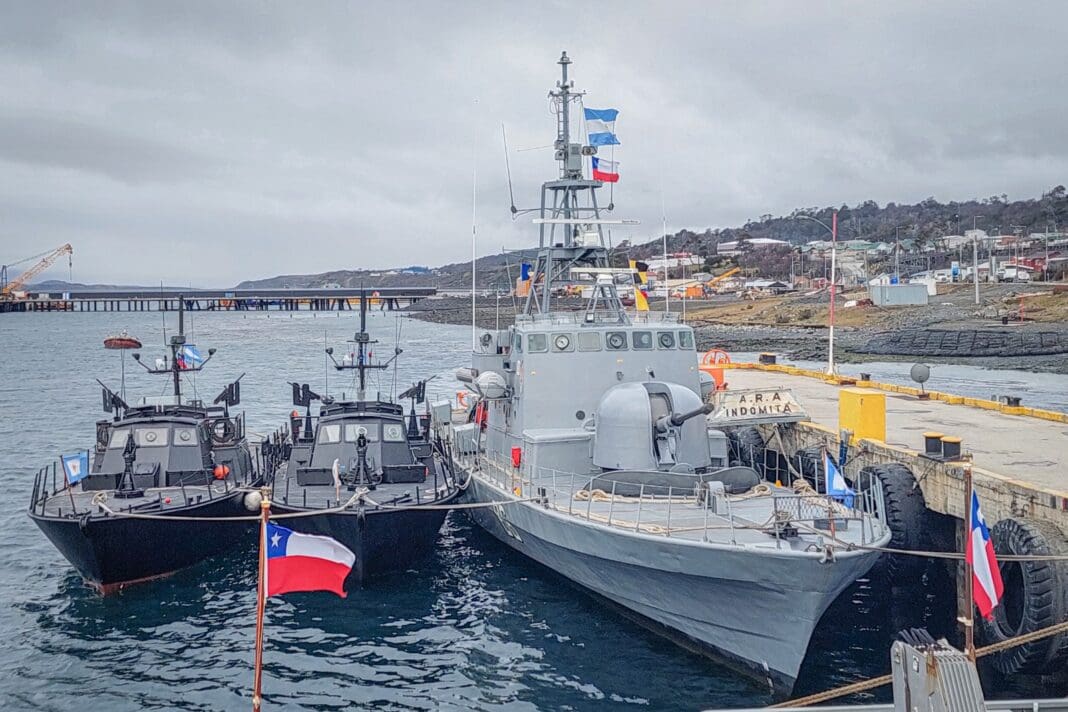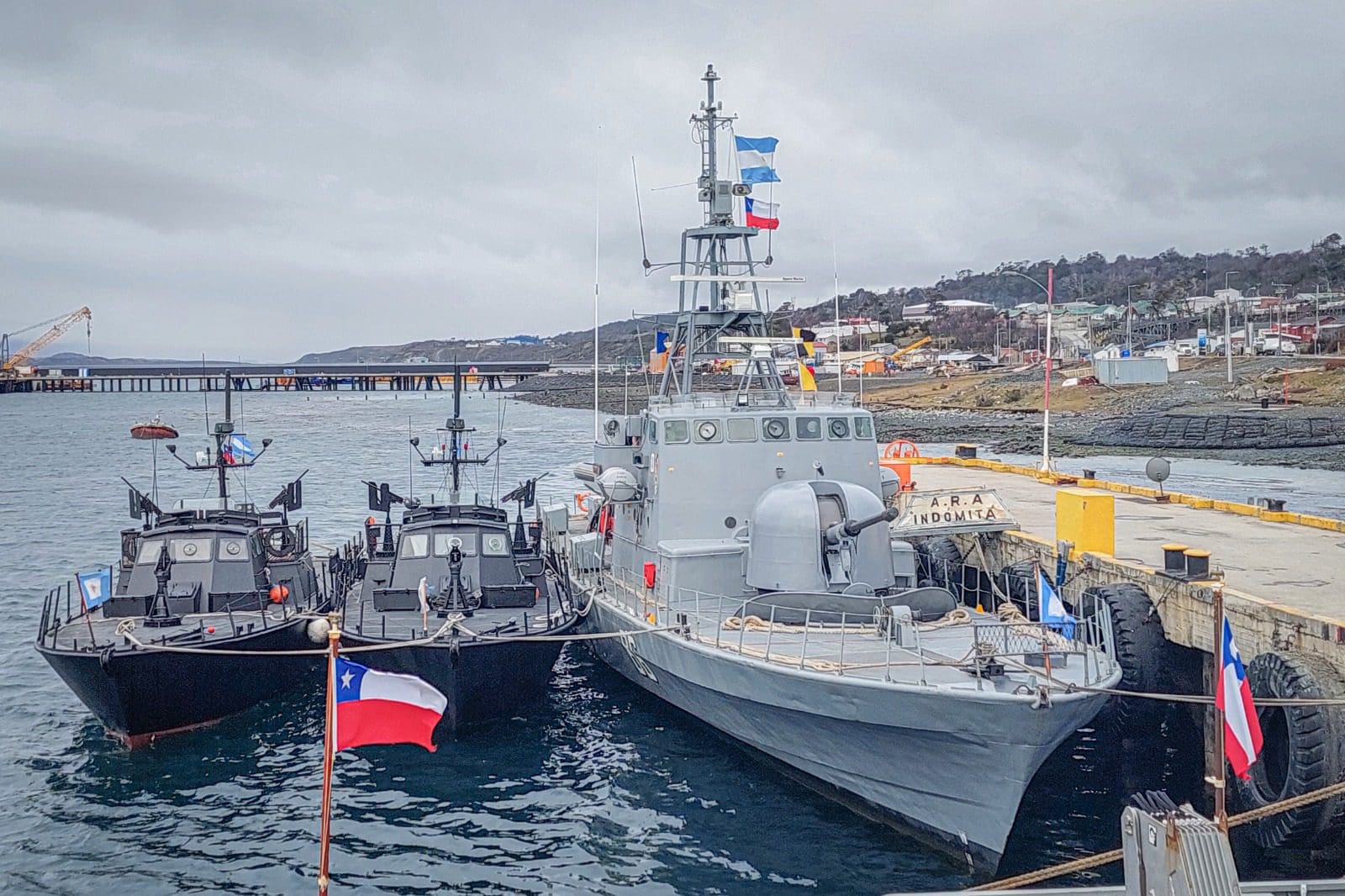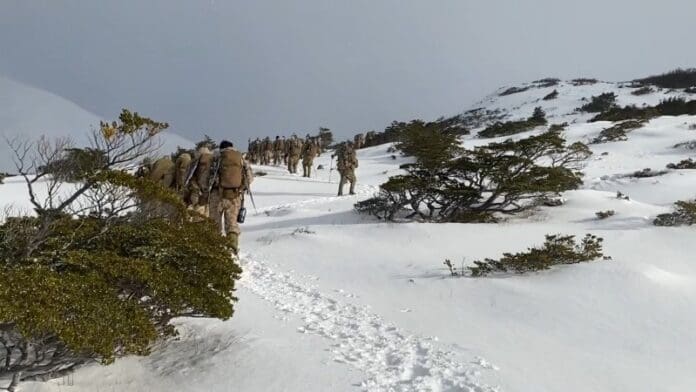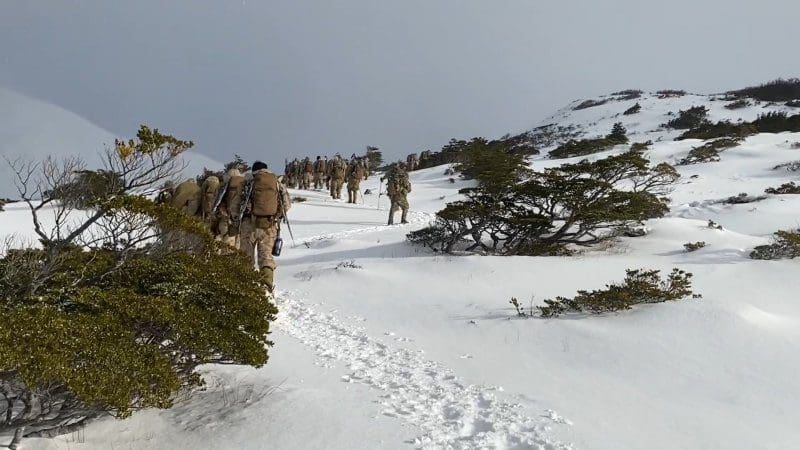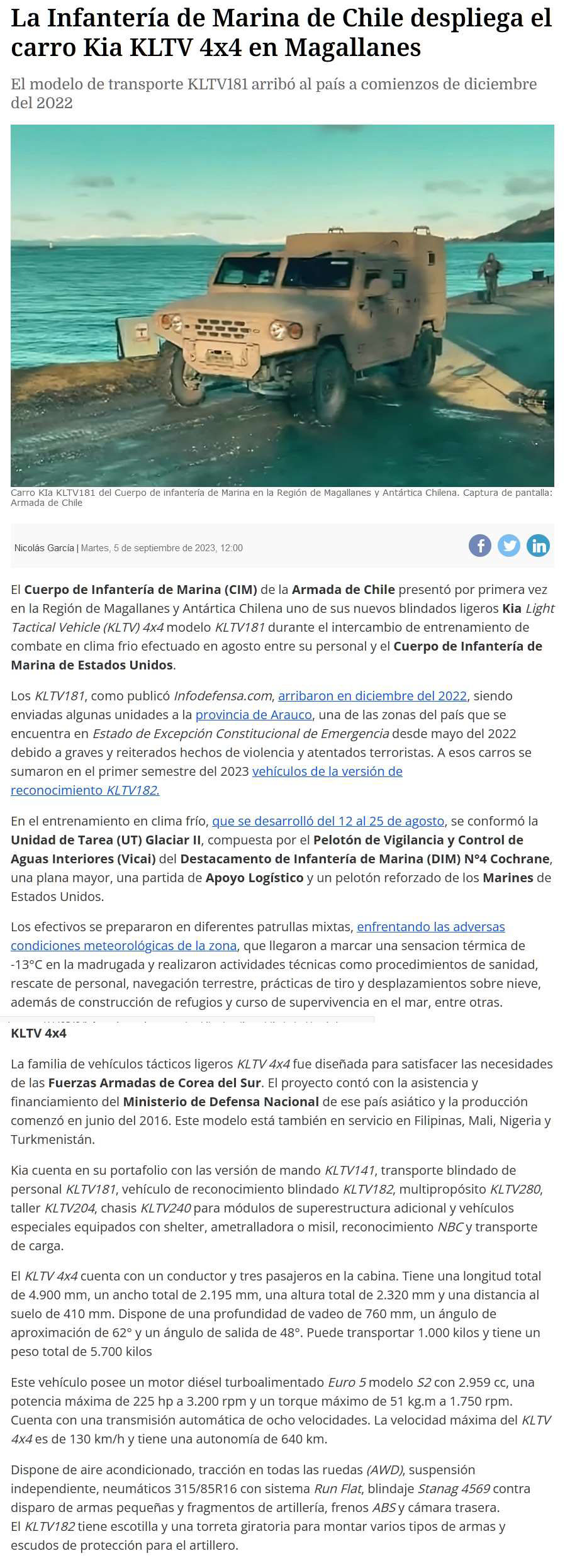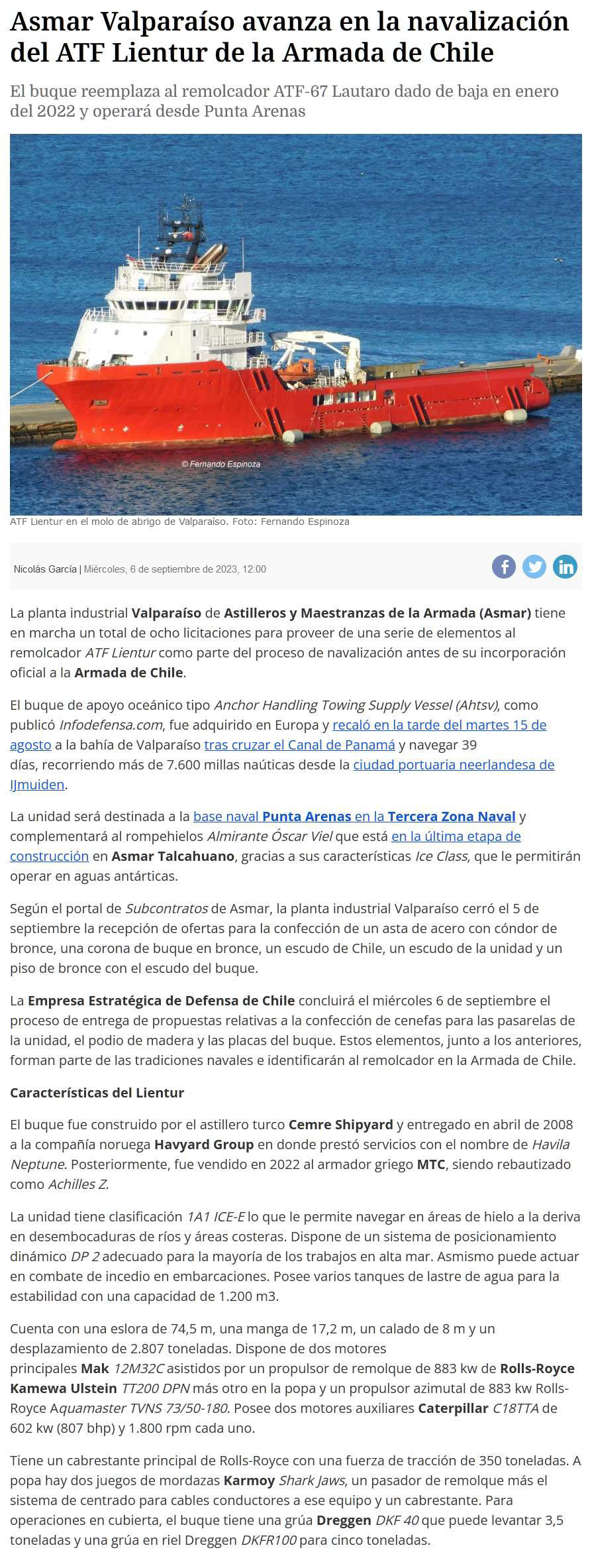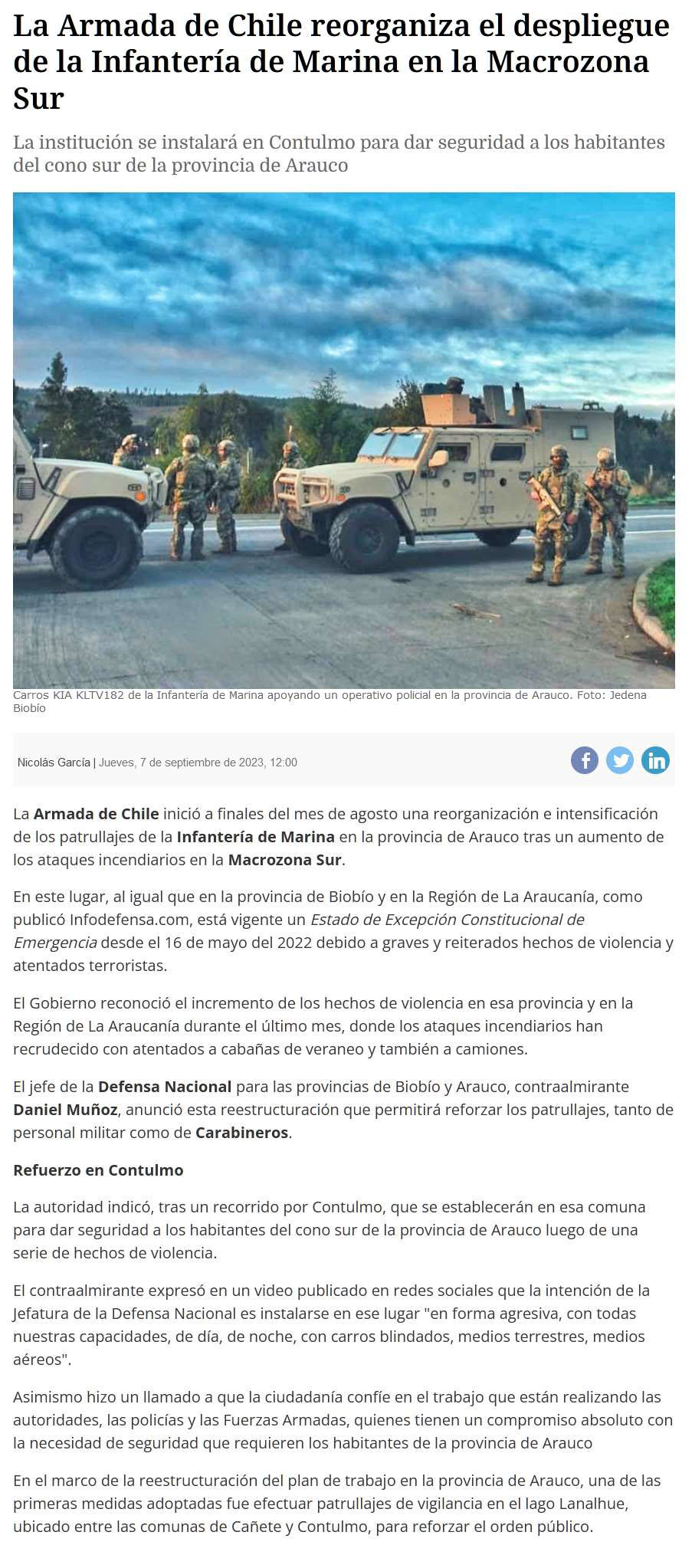By
Lookout Production on Mar 24, 2023 with
Comments 0
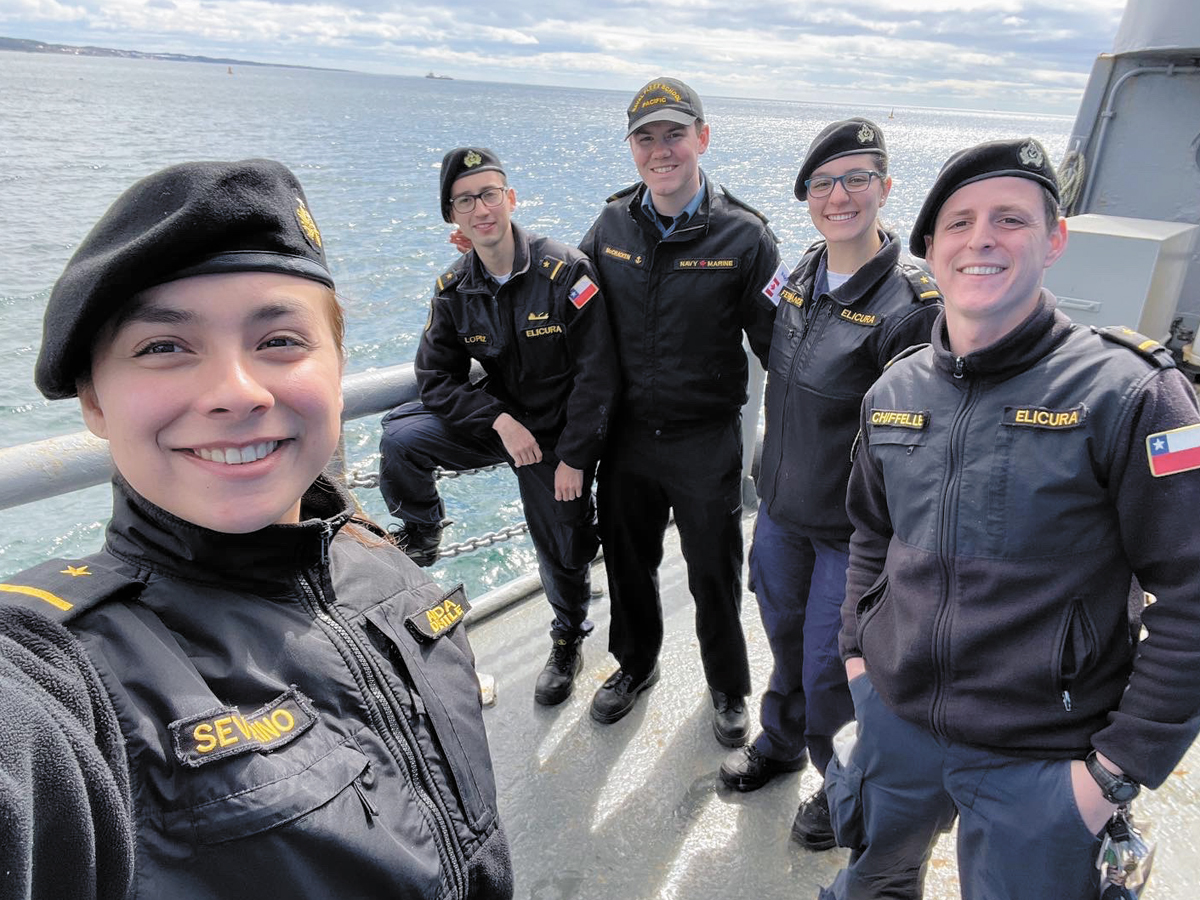
Acting Sub Lieutenant (A/SLt) Damian McCracken (third from left) poses for a selfie with Chilean Navy counterparts during his exchange.
A/SLt Damian McCracken — Recently, a longstanding exchange has resumed after it was paused during the pandemic; several Naval Warfare Officer (NWO) students at HMCS
Venture have had the opportunity to sail with the Chilean Armada.
Earlier this year, I was lucky to be on one of these exchanges where, for three weeks, I learned as much as I could from the Chilean sailors and officers.
I arrived at Punta Arenas, at the southernmost tip of South America, with few expectations. I hoped to improve my coastal navigation and general watchkeeping skills since the area was considered geographically challenging. I learned a lot in this regard, but the most significant benefit of my trip for me may have been the exposure to a navy that is both very similar to and different from ours.
The Chilean Armada, like the Royal Canadian Navy, has strong British roots. Many of their traditions descend from the Royal Navy, and their shipboard life is quite similar to ours. However, the overall organization of the Armada is quite different. They fulfill the role of the Navy and the Coast Guard; sovereignty, hydrographic surveys, Search and Rescue, and even the maintenance of aids to navigation are all responsibilities of the Armada.
Their size reflects this broad jurisdiction, as the Armada has over 25,000 personnel. Many of their members are posted long-term to remote bases, which have particular functions. For example, I visited a naval base on Isla Dawson, which existed primarily to dispose of munitions. Over 100 personnel lived there full-time with their families. It takes consistent resupplies from ships in the Naval Zone to keep these bases running.
Chile has built many of its ships but has also procured many of them internationally. In Punta Arenas, I encountered an icebreaker from Canada, a large tug from India, and a missile boat from Israel. I noticed that each crew had adapted well to the different vessels. Boat launching, the bridge layout and technology, maneuvering, and living spaces differed between ships.
The Gulf Islands are a perfect training area for navigation, and the Tierra Del Fuego Archipelago easily matches them with its many inlets and channels. While many elements of watchkeeping and navigation were the same as ours, their use of paper charts was impressive. The Chilean Armada indeed uses electronic charts, but only as a backup. There is less room for error when fixing on paper; inaccuracies caused by slow work or poor fixing points are more pronounced without a computer, and they learn to trust their math and eyes to confirm the ship’s position. For an NWO student at
Venture, these were valuable lessons to learn early in one’s career.
The sailors and officers were both fantastic hosts and professional mariners. Not only were they hard-working and competent, but they were enthusiastic about showing me their work. Almost all officers join through their Naval Academy, where they spend four years earning the equivalent of an academic degree but specific to the naval realm. As a result, most of the junior officers I met were between 22 and 23 years old and already working toward their watchkeeping tickets.
I think the resumption of this exchange is excellent for students at HMCS
Venture. The experience of working alongside another navy in a different part of the world has been as valuable as any of the training I have received so far.
A/SLt Damian McCracken — Recently, a longstanding exchange has resumed after it was paused during the pandemic; several Naval Warfare Officer (NWO) students at HMCS Venture have had the opportunity to sail with the Chilean Armada. Earlier this year, I was lucky to be on one of these exchanges...

www.lookoutnewspaper.com

